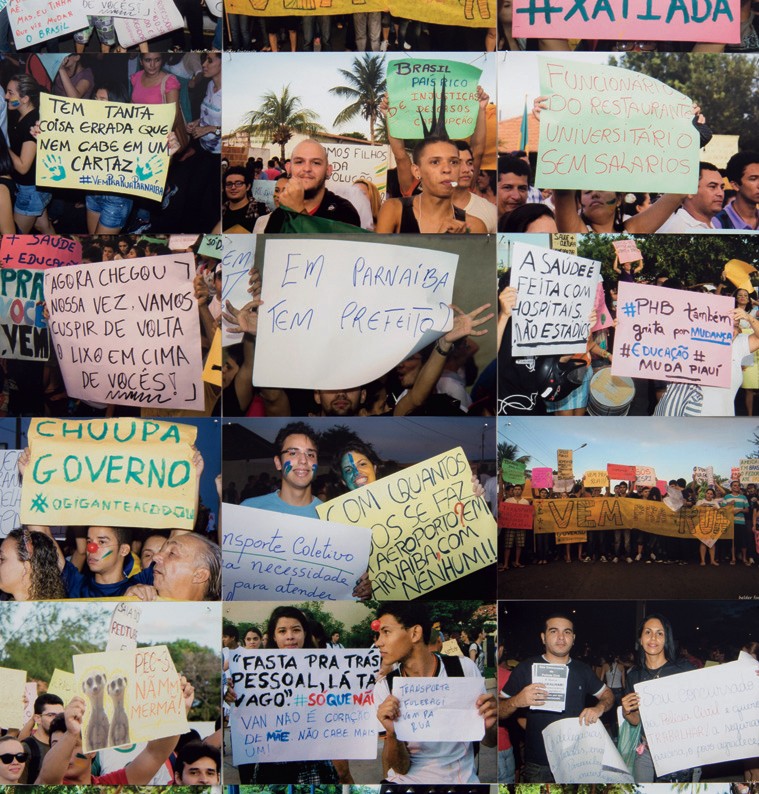Stolen Affinities
Samuel de Lange is on a roll. The Guelph-based photographer recently won the National prize in the Bank of Montreal’s 1st Art! Invitational Student Art Competition. His award-winning chromogenic print was scanned from a sheet of Polaroid 669 stock that is so far beyond its best-before date that it can’t support a recognizable image. What it can support, though, is a photograph that is more atmosphere than image. A photograph that happens more than it is taken.
De Lange is interested in finding a balance between intervention and absence in the process of making photographs. Another of his ongoing projects is called “Em Progresso…,” a body of work now numbering some one-thousand pictures, in which he is printing, arranging and exhibiting 4” x 6” photographs taken on his camera, but ones he didn’t take; it is an unrecognized collaboration.
In late July 2012 his camera bag was stolen from a McDonald’s bathroom in the La Boca area of Buenos Aires. In the bag were his equipment and six-months-worth of project research. Months after the theft he learned about a program designed to reunite people with their missing cameras; it uses specialized search software capable of extracting and tracing the serial number embedded in the metadata of any digital image file.
Eleven months later that research base made it possible to locate images taken on his stolen camera. When it happened, it was dramatic. “This whole library flooded in, this archive of close to a thousand images just opened up.” The new owner of his camera lives in northern Brazil. De Lange figures he bought it in the black market in Paraguay. “It’s this weird no man’s land where you can avoid paying heavy taxes. The legality is questionable but a lot of Brazilians, Argentines and Peruvians go there to buy electronics. It’s called the ‘supermarket of South America’.”
Curiously, de Lange has developed an affinity for the shadow photographer he has never met. “He is actively photographing what is around him in a country that is in flux. So you’re getting access to inside documentary that is only just starting to emerge.” Some of the images are quotidian and clichéd; a romantic sunset, a cap on a fence post. Others are more poignant; a roadside grave, street protests and gay pride parades. There are images of women dressed for Carnival and pretty, muscle-bound boys on the beach.

Samuel de Lange, “Em Progresso…,” installation view, 2014, 586 4- x 6-inch digital chromogenic prints, vitrine pins, dimensions variable. All images courtesy the artist.
De Lange has exhibited the images as part of “an overwhelming mass of images that you can get lost in.” But he is interested in other methods of installation. “The way the guy inserts metadata into the photographs can make for odd organizational patterns,” de Lange says. “You get a transvestite next to a child because they are both tagged ‘woman,’ so these weird things start to emerge. It’s interesting to see the rhizomatic ways that people pop up through this wall of images and to see the formation of these strange narratives.”
De Lange has made no contact with his photographic double. His component is analog and the Brazilian component only exists as data on a screen. “I have a feeling that if we do meet,” says de Lange, “it may be the ultimate culmination of the project.” The roll continues from Em Progresso to Em Conclusao. ❚
For more from this issue, see here.

